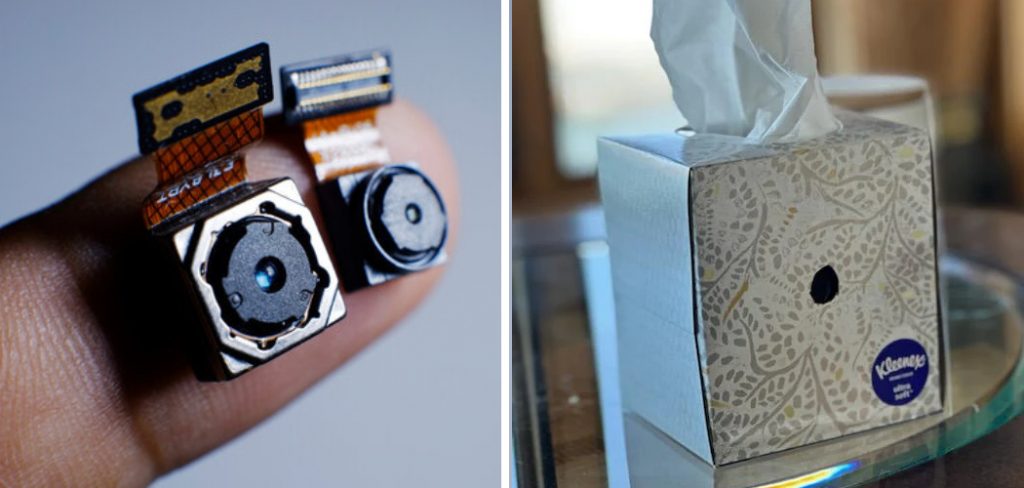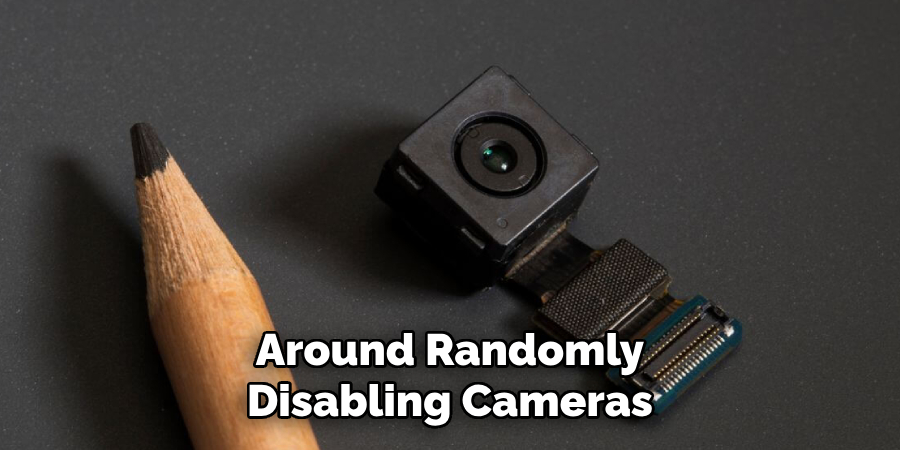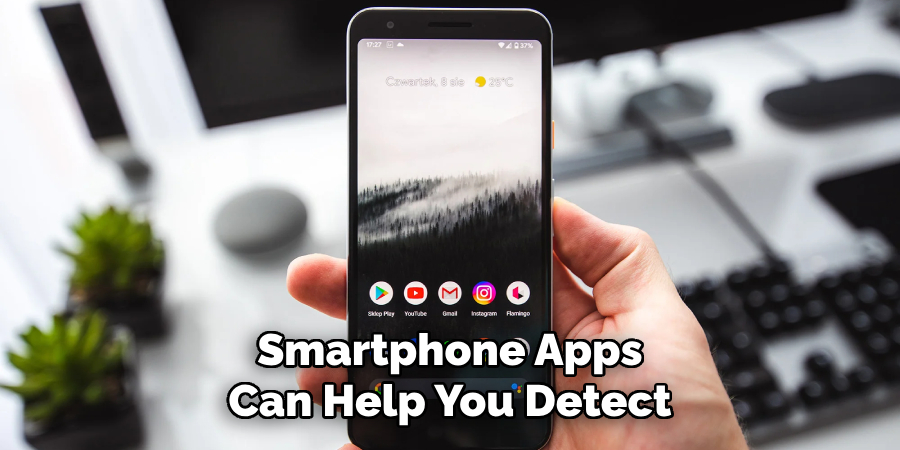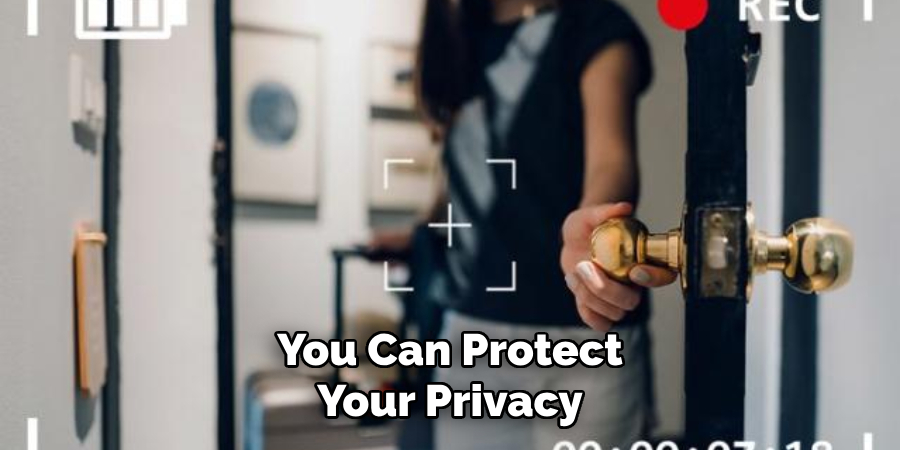Are you worried about your privacy and safety in public spaces? With the rise of cameras, smartphones, and other forms of technology, it can be challenging to feel secure. Fortunately, there are steps that you can take to prevent hidden cameras from accessing your information without your permission.

Hidden cameras are often placed in locations that are difficult to detect, such as inside light fixtures, smoke detectors, or USB chargers. They can be used for various purposes, including surveillance, spying, and stealing sensitive information.
This blog post will discuss ways how to disable hidden cameras so that you can have greater peace of mind when out and about. From signal jammers to camera scramblers, we’ll look at what options are available today so that you don’t need to worry about being spied on by anyone but yourself. It’s time for some digital protection – let’s dive in!
What Will You Need?
Before we get into how to disable hidden cameras, let’s talk about what you’ll need.
- Electronic Device: You’ll need a device that can interfere with the camera’s signal, such as a Wi-Fi signal jammer or an infrared light emitter. Do your research and purchase from reputable sources, as some devices can be illegal in certain countries.
- Knowledge of The Law: It’s essential to know the laws surrounding hidden cameras in your area before taking action. While it may be tempting to destroy or disable a hidden camera, doing so could result in consequences if deemed illegal.
- A Plan: Don’t just go around randomly disabling cameras without a plan. Doing so can lead to accidental damage or harm to yourself or others. Have a clear idea of what areas you want to protect and how you will do so.

Now that you have everything you need let’s look at some methods to disable hidden cameras.
10 Easy Steps on How to Disable Hidden Cameras
Step 1: Identify the Hidden Camera:
The first step in disabling a hidden camera is to locate it. Look out for unusual objects in your surroundings; these could be wall clocks, smoke detectors, or even tiny holes in the walls or ceilings. Cameras are often hidden in these places. Some devices, like RF detectors, can help you detect signals from hidden cameras.
Step 2: Analyze the Power Source:
After identifying the hidden camera, the next step is to find its power source. Hidden cameras are typically powered in two ways – by a battery or directly from the power source. For battery-powered ones, simply removing the batteries will render the camera inoperable.
For ones directly wired to the power source, be very careful. Only attempt to cut wires if you are a trained professional, as you could risk electric shock. Consider seeking professional help to disable such a camera safely.
Step 3: Block the Camera’s View
If the camera is hardwired and you cannot safely disconnect it, the next best option is to obstruct its view. You can use tape, sticky notes, or even a cloth to cover the camera lens. Remember, the goal here is not to damage the camera but to prevent it from recording or capturing images.
If the camera is located in a private space like a hotel room or a restroom, you can also request management to remove it. If they refuse, remove yourself from the situation and report it to the relevant authorities.

Step 4: Use a Camera Disruptor:
A camera disruptor is a device that sends interfering signals to the hidden camera, causing it to stop functioning. These devices work by emitting infrared LEDs, which blind the camera sensor, making it incapable of capturing clear images.
Camera disruptors have different range capabilities, so choose one suitable for your needs. Please remember that it’s essential to check if using such devices is legal in your area before you proceed with this step.
Step 5: Use a Signal Jammer:
Signal jammers generate a radio frequency signal to interrupt or prevent communication between a camera and its receiver. They can be effective at disabling wireless hidden cameras.
However, remember that signal jammers are illegal in some countries, and their use could interfere with other devices’ wireless connectivity in the vicinity. Always ensure it’s legal to use a signal jammer in your region before considering this option.
Step 6: Employ a Wi-Fi Interceptor:
A Wi-Fi interceptor is a device or software that can block or intercept wireless signals. These tools can inhibit a hidden camera’s ability to transmit data, limiting its function.
However, similar to signal jammers, using Wi-Fi interceptors is regulated by law in many areas, as they can also interfere with other wireless networks. Always do your due diligence to ensure the legality of such tools in your location before use.
Step 7: Use Smartphone Apps:
Several smartphone apps can help you detect and disable hidden cameras. These apps work by scanning for the reflection of the camera lens or identifying electromagnetic fields typical of digital devices.

While they may not be 100 percent effective in all cases, they can provide an additional layer of security and peace of mind. Always ensure you Install apps from trusted sources to avoid malware or spyware.
Step 8: Consult a Professional:
If you’re still unsure about whether you’ve successfully disabled a hidden camera or if you’re dealing with a particularly complex situation, it might be best to consult a professional. A trained professional can ensure that cameras are adequately disabled without causing damage or legal issues. If you’re unsure who to consult, consider contacting a private investigator or security consultant for assistance.
Step 9: Invest in Privacy Protection Devices:
In addition to taking the steps mentioned above, it’s always a good idea to invest in privacy protection devices. These devices are designed to protect your personal space from hidden cameras and other spying techniques. Some examples include RF detectors, camera detectors, and bug sweepers. While they may not be foolproof, they can provide extra protection against unwanted surveillance.
Step 10: Stay Vigilant:
Finally, the most important step in disabling hidden cameras is to stay vigilant. Always be aware of your surroundings and take precautions when necessary. Avoid staying in unfamiliar places that may have hidden cameras, and always trust your instincts if you suspect something is amiss.
It’s always better to be safe than sorry. By following these steps, you can protect your privacy and ensure that hidden cameras do not invade your personal space. Remember, prevention is always better than cure when keeping yourself safe from potential threats.

With the advancements in technology, hidden cameras are becoming increasingly common. It’s essential to stay informed and educated on how to protect yourself from these invasions of privacy.
5 Additional Tips and Tricks
- Inspect Your Environment: Firstly, make a thorough inspection of your surroundings. Hidden cameras are often concealed in everyday objects such as alarm clocks, smoke detectors, or plants.
- Use a Camera Detector: There are devices available on the market specifically designed to detect hidden cameras through the reflection of light off the camera lens.
- Turn Off the Lights and Use a Flashlight: In a dark room, use a flashlight to scan the room slowly. Hidden cameras might reflect light and reveal their locations.
- Check for Unusual Wires: Hidden cameras need power to operate, so look for any unusual wires or power sources that don’t seem to connect to any known device.
- Use Mobile Apps: There are various smartphone apps available that can help detect the electromagnetic fields created by electronic devices. These can be particularly helpful for detecting hidden cameras.
With these additional tips and tricks, you can become an expert at detecting and disabling hidden cameras.
5 Things You Should Avoid
- Avoid Ignoring Your Gut Feeling: If something feels off or you feel watched, don’t brush it off. It’s better to be safe than sorry.
- Avoid Overlooking Small Details: Hidden cameras can be tiny and disguised as ordinary objects. Don’t overlook any oddities in your surroundings.
- Avoid Relying Solely on Tech Devices: While camera detectors and mobile apps can be helpful, they could be more foolproof. Combining these with your vigilant observation is key.
- Avoid Damaging Detected Cameras Immediately: If you find a hidden camera, it’s critical not to damage it immediately, as it can be used as evidence if you decide to report it.
- Avoid Neglecting Online Privacy: Even as you safeguard your physical privacy, remember that cameras could also be spying on your digital activities, so ensure you have adequate cybersecurity measures.

By avoiding these common mistakes, you can better protect yourself from hidden cameras.
How Do You Scan Wifi for Hidden Cameras?
Scanning for hidden cameras through wifi is a more advanced method, but it can be an effective way to detect any wireless cameras in your surroundings. Here are the steps to follow:
- Install a Wi-Fi Scanning App: To scan for devices connected to your Wi-Fi network, you must Install a Wi-Fi scanning app on your smartphone or computer. Some popular options include Fing, WiFi Analyzer, and Network Scanner.
- Connect Your Device to the Network: Ensure your device is connected to the same network as the suspected hidden camera.
- Start Scanning: Open the wifi scanning app and let it run a scan of all the devices connected to your network. The app will display a list of MAC addresses (a unique identifier for network devices) and their corresponding IP addresses.
- Look for Unfamiliar Devices: The list of devices will likely include your phone, laptop, and other known devices. If you see any unfamiliar MAC addresses or device names, it could be a hidden camera in disguise.
- Further Investigation: Once you have identified a suspicious device, you can use the app to gather more information, such as the manufacturer and model number. This can help determine if it is indeed a hidden camera.
Overall, scanning for hidden cameras through wifi requires technical knowledge and may only be practical for some. It’s always best to combine this method with physical inspection and other tips mentioned above for better results.
Conclusion
To conclude, if you’re concerned about hidden cameras or recording devices in your home and would like to protect yourself, knowing how to properly scan your home for any suspicious devices and disabling hidden cameras is a great place to start.
Hopefully, the article on how to disable hidden cameras has given you some helpful information. In the end, your safety and privacy should always come first, and you can make sure of that by arming yourself with the right knowledge.
So, take the steps we discussed in this blog post today and stay safe from intrusive cameras or recorders. Don’t wait; start looking for hidden cameras now!

